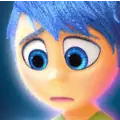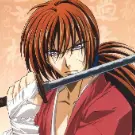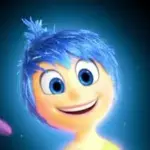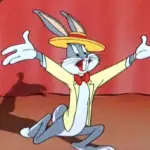Parody and satire of Hollywood have long been significant creative approaches for Hollywood filmmakers, each with their unique focus. Billy Wilder's "Sunset Blvd." offers a deep reflection, exposing the illusion of the dream-making process and the alienation it causes. In contrast, the Coen brothers' "Hail, Caesar!" humorously highlights the collective delusion of Americans, extending from Hollywood to the public who support it, ultimately touching on the ideological dream of a "powerful America." Woody Allen's "Café Society" and similar works provide satire through humorous anecdotes.
Compared to these films, "The Fall Guy" undeniably seems more commercial and genre-specific, and its expressiveness cannot be compared to the others. It focuses on blending expression with genre elements, using the latter to express the former, and designs comprehensively around this point in multiple stages.
In the film, the career struggles of stuntmen, who "aren't allowed to show their faces," are linked with love, which is also kept private. Thus, the film combines career and romantic themes. In the prologue, the couple's kiss is blurred out, reflecting the subjective perspective of Colt's personal life, where normal interactions with his lover only occur in the privacy of an elevator. This mirrors his career, where he must compromise when dealing with actors and agents. However, this hidden lifestyle is unsustainable, leading to a simultaneous downfall in both his career and love life by the film's end.

Be The Protagonist in Your Life
Compared to the packaged celebrities and sensationalized lifestyles, stuntmen and real-life challenges are truly captivating. The real acts of rising up come from struggle and liberation. The film showcases the process of creating stunt actions and special effects, especially "face-swapping," and reveals Hollywood's commercial packaging of stars. When the camera focuses on the film set itself, rather than hiding the truth with "completed scenes," it highlights the genuine efforts of real people, providing an inside look at Hollywood.
In this segment, as the film repeatedly shoots scenes, it shows the stuntman's introspection before being berated by his girlfriend Jody. The repetitive pain stuntmen endure merges with the blows one faces in life. David Leitch handles these scenes masterfully, making each retake different. The "part within the frame" gradually diminishes, leaving behind the part in reality, which is combined with the states of other actors in practical makeup and the common conditions of the crew. This emphasizes "stepping out of special effects packaging" in filming and "facing adversity directly" in life. Life isn't a movie; setbacks in career and love aren't easily resolved but are often avoided. Stunt actions aren't painlessly accomplished either. Therefore, the protagonist must painfully complete the actions on a real set and face difficulties in real life.

Colt stepping out of "face-swapping" signifies his commitment to authenticity both in the film world and real life, facing all past experiences head-on. The movie underscores this type of individual's "absolute authenticity," devoid of agent packaging or the "nihilistic" "Bacon wrapping" often spoken of by agents. What remains is genuine effort and simple sweat, giving them a greater ability to "triumph over reality" than celebrities. This is exemplified by the different reactions between stars and stuntmen facing similar career challenges.
Colt replaces the big star, resolving his descent into obscurity, continuing this contrast and blending reality with cinema. A representative scene takes place in the star's home where he fights a female action star, completing in a real-world setting what they would do in a film, with David Leitch even incorporating parody scenes from "Dune." Later, Colt's fight against gangsters reinforces the idea of "movies reflecting reality." Though not filming, he completes the fight amid dreamlike lighting and shadows, defeating the villain like a movie protagonist, addressing issues stars are ill-equipped to handle.
This interplay, interaction, and fusion between "film" and "reality" persist throughout the movie, showcasing David Leitch's design. He creates various forms of cinematic and surreal sensations across scenes, only to break them down, paying tribute through parodies of classic works or techniques, and then disproving the dream-like outcomes these classics offer, all while generating offbeat humor.

Reality is Tougher Than Movies
In the second phase, Colt faces even greater difficulties in reality. Jody won't forgive him easily, and actions aren't as smoothly executed. He continues to perform classic movie stunts like jumping off buildings and sneaking into rooms, but not without setbacks. Missteps during jumps and using the wrong keys bring him "crashing back to reality." The surreal elements within these scenes—like an abrupt appearance of a horse or expressionistic lighting—are interrupted by Jody's phone calls, shattering the illusion and pulling him back to the harsh reality of their strained relationship. This contrast is highlighted through split-screen techniques, emphasizing that reality isn’t as forgiving as cinema; it requires more resilience than mere physical prowess or bravado.
In the final stage, “The Fall Guy” presents a direct confrontation between "movies" and "reality," ultimately showing how movies integrate into reality. Colt faces his "dream creation"—a male star who wants to kill him. Using special effects and face-changing dream technologies, Colt becomes the adversary of these "false dreams." His predicament stems from the real aspects woven into these fabricated dreams, where the star's inflated ego, unable to handle the fakeness, reacts violently. This crime leads Colt down a path of decline. Meanwhile, the female lead confronts the producer from a creative standpoint, pitting her genuine creativity against his conceptual packaging, which materializes in plotting against Colt versus genuinely caring for him.

The duo achieves a complete victory over fake dream-making, proving the positive power of their existence as Hollywood's "exactly honed results." Meanwhile, "movie" completely falls into "real form" in two scenes—Colt completes a real fight at the Sydney Opera House, which was once a film set, presenting the most standard "Hollywood action scene" that actually happens. The movie behind the heroine changes from a poster to an image, turning from false to real existence, while the music appears in the form of an "after packaging CD version," but truly describes the love between the two at this moment.
"Movie" thoroughly enters reality, and all aspects of special effects become the support for Colt to defeat the star. In the real stunt car, Colt remains unscathed while the star faints; in front of the discussion meeting car, the agent is defeated by David Leitch; in the big scene on the set, the special effects team defeats the gangsters. These events demonstrate the exact positive value of Hollywood's "dream-making" existence. On a broader level of drama creation, they also face a movie plan that is actually a conspiracy. Movie creation and conspiracy design are two forms of "artificial unreality," but they break the former and complete the latter. David Leitch completes his work in reality, and the special effects double becomes the "protagonist" in reality.
The endpoint is crucial. Colt ultimately does not become the protagonist of the movie. The movie eventually features other stars in leading roles in a fictional form, and he remains a stuntman. This aspect serves as a parody while also expressing adherence to the "exact positivity" of the industry, clearly defining the boundary between reality and fiction: the effort of stuntmen is the real result of dream-making, and if Colt succeeded as an actor, it would turn the film into a "fictional" cliched Hollywood story, just another fake dream-making. David Leitch underscores this point with Colt's final monologue, debunking the audience's mistaken expectations of a "clichéd development," reflecting the film's clever and sober expression. It also elevates the theme: real inspiration shines through in dedication at ordinary positions, not in fabricated inspirational clichés.
This is a clever aspect of the work. David Leitch knows that he has essentially made another Hollywood-style "cliché" story. Therefore, he mutes this clichéd feeling by deliberately emphasizing "false dream stories and special effects." By the end, it represents a potential "return to reality" for the film. Starting from its premise, it shatters dreams but ensures everyone fulfills their roles, thereby maintaining the ecological order of Hollywood. This is a potential "counter-criticism," a defense of Hollywood's current state. Even the film's promotion of stunt actors is another form of "inspirational dream-making," blurring more complex realities with light entertainment, telling you "this is what's real." This subtle "whitewashing" is evident in the ending's portrayal of the star, who ultimately awakens to conscience and exclaims, "He's my best stunt double." David Leitch explores a less comfortable theme but doesn't want it to be too serious or gloomy, hence presenting it in an entertaining manner. This aligns with the optimistic and positive spirit that sustains Colt and others internally throughout their lives—a capability granted by Hollywood, beyond dream-making movies, to a more genuine "inspirational main theme."
















































Share your thoughts!
Be the first to start the conversation.